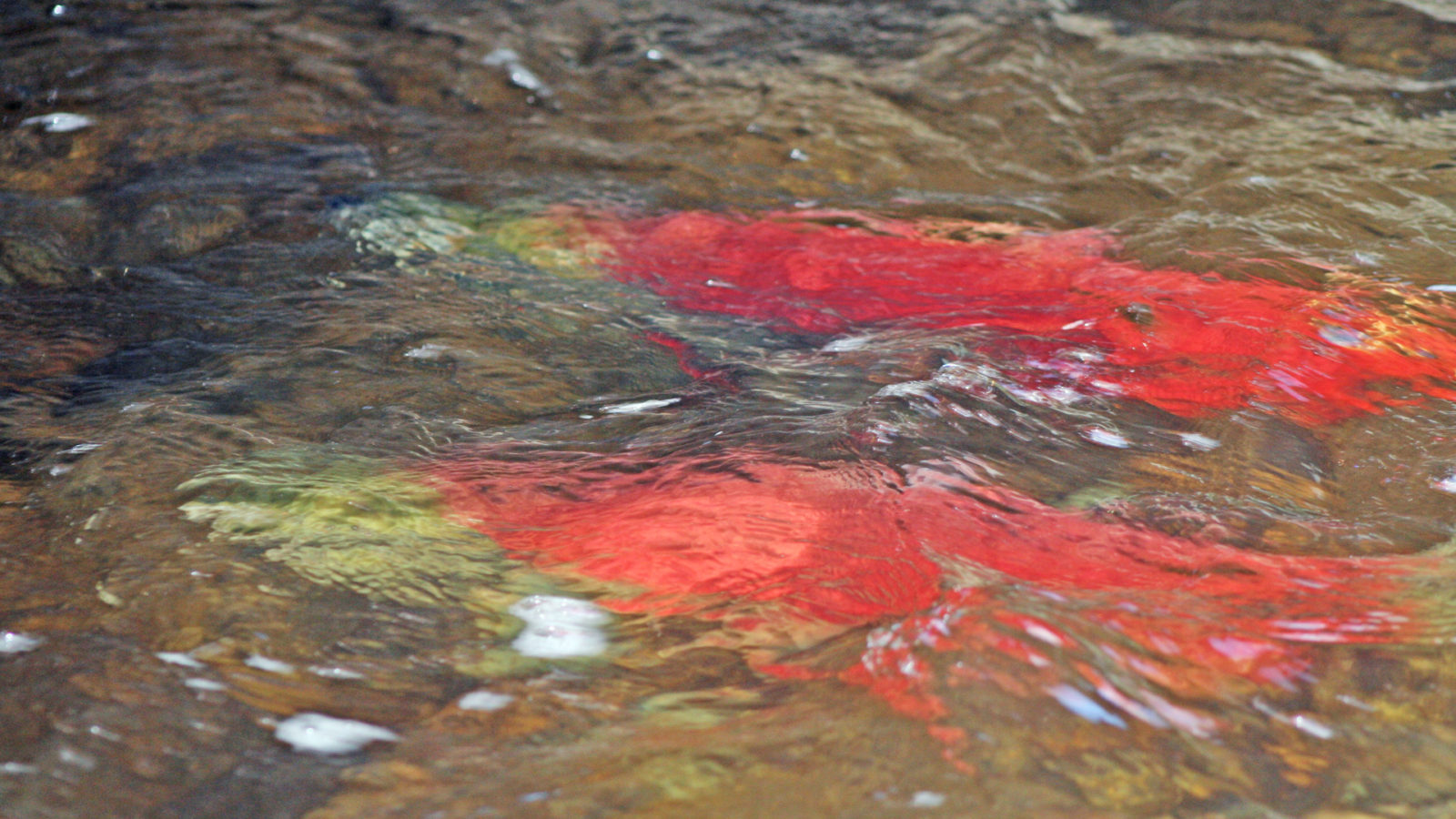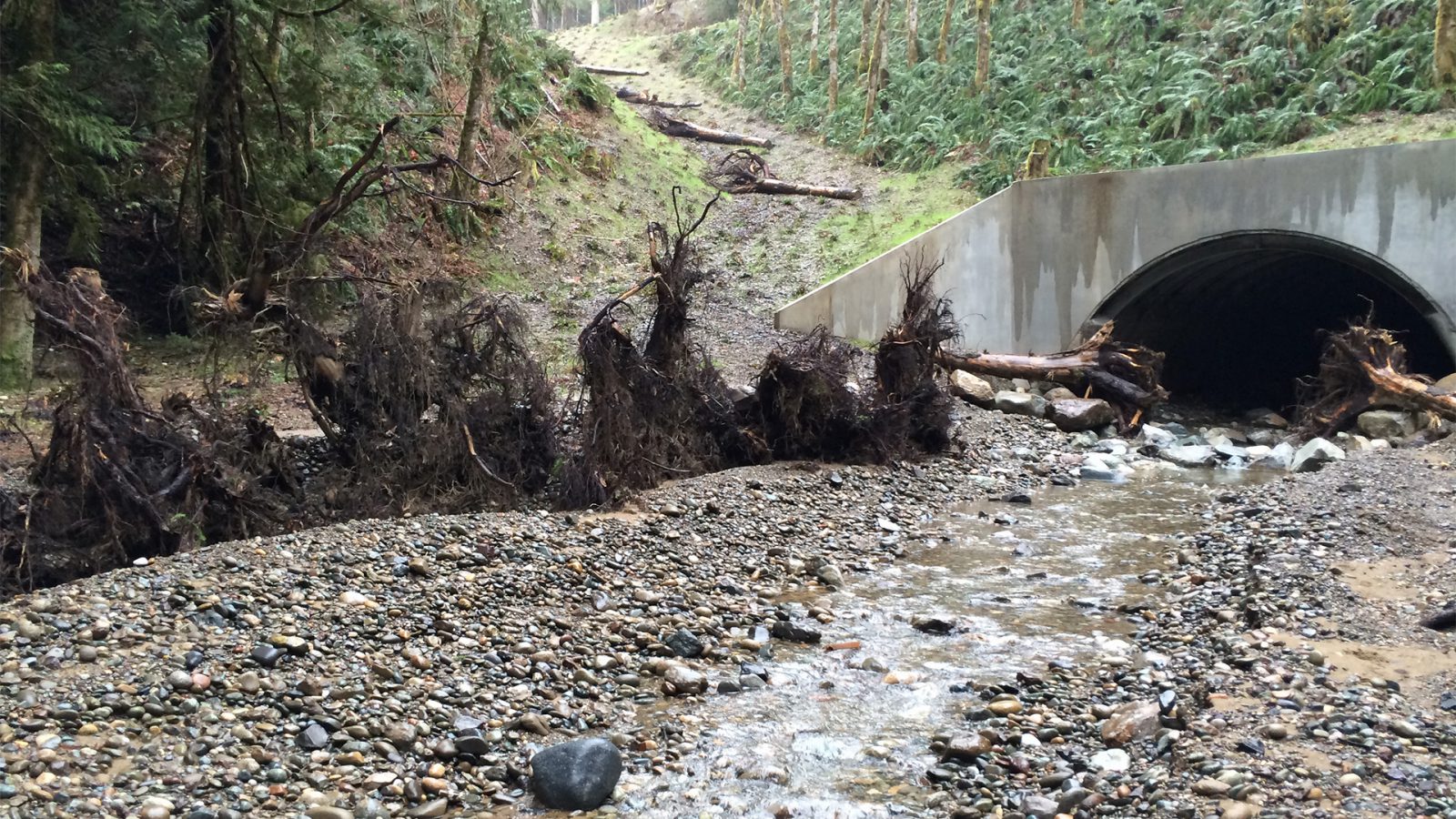
Fish Passage Culverts
A Salmon Tale
A national treasure and local Pacific Northwest icon, salmon are an important part of our state’s natural history and economy. Unfortunately, significant amounts of salmon habitat around Puget Sound have been lost over the last 125 years. It is critical for adult salmon to have open spawning passages so they may produce the next generation of fish. Many of the culverts that were put in place years ago are blockages to fish migration. Even though salmon species have adapted to use virtually every part of every stream in the northwest, old culverts that are past their useful life or culverts that were not designed properly do not provide proper conditions for fish passage.
Our expert culvert team is comprised of highly qualified professionals armed with knowledge of the issues that many culvert projects face as well as tailored expertise specific to assessing and designing culverts. Our team has experience with culvert projects ranging from projects as large as 67 culverts to single culvert projects.
FISHING FOR MORE INFO?
Fish passage has become a major issue in Washington state since the 2013 “Martinez ruling” and subsequent ruling by the circuit court of appeals against the state of Washington agencies for a “takings” under the Endangered Species Act. The taking occurred by culverts installed and maintained by state agencies that, by design, do not allow unrestricted fish passage to spawning or rearing areas. Our expert culvert team is comprised of highly qualified professionals with knowledge of the issues surrounding the Martinez ruling and tailored expertise specific to assessing and designing culverts.
Our Approach: We use the same team that has performed over 50 designs and associated construction for fish passage culverts. This extensive amount of fish passage experience is a significant benefit to our clients in that we implement proven strategies and employ our methods and knowledge to efficiently complete projects in a cost-effective manner with cost-effective solutions.
After meeting with the client and other stakeholders to learn more about the goals and objectives of the project, our team collects and reviews existing reports, maps and record drawings for any existing culverts. We assess infrastructure for structural condition of the culverts and drainage features. We also identify any fish habitats and determine if they are being blocked. A team effort, we partner with fish biologists and scientists on assessments and design work. We also utilize our survey team for any topographic surveying needed including GIS mapping, researching existing utilities, right of way widths, and easements.
Our team performs site visits to collect additional data as required to verify culvert conditions, fish passage required, and habitat. To properly determine fish passage barrier status and replacement culvert dimensions, representative bankfull width measurements are required. We use the Water Crossings Design Guidelines, Washington Department of Fish and Wildlife to design replacement culverts.
After the field effort, the observations are compared to a variety of map products such as SalmonScape (WDFW) and stream inventory maps. We utilize a unique priority spreadsheet that rank culverts numerically for various criteria that are weighted uniquely for each project. Criteria typically included in our unique culvert spreadsheets are cost, amount of habitat gained and impacts to the surrounding area. All these criteria are weighted according to each client’s preference.
Preliminary designs will then be developed and analyzed for effectiveness, constructability and cost. All fish passage culvert designs are based on the WDFW requirements and stream simulation methods which is the most current fish culvert sizing methodology. All culverts are checked for capacity and potential debris loading by performing Hydrology and Hydraulic calculations for each culvert. This is a crucial task in determining flooding impacts of private and public property.
Culvert design drawings are developed including sections, profiles, plan views, proposed grades and details as required to show culvert layout, sizing, slopes, and lengths. Other elements designed may include headwalls, grading, temporary erosion and sediment control, additional site work to create construction access, and laydown areas. Existing utilities relocations, improvements to surfaces including sidewalks, pavement removal and replacement and preliminary traffic control plans are evaluated. Environmental mitigation measures are also evaluated and incorporated into the preliminary design.
Culvert Design, Engineering & Watershed Modeling: Reid Middleton’s experience with culvert design including engineering and watershed modeling includes preliminary design for 47 fish passage culverts using the WDFW protocol and stream simulation method including basin modeling. Our comprehensive experience with fish passage design methods for a wide-range of stream conditions allows our team to employ our knowledge to efficiently create cost effective solutions that comply with regulatory requirements.
Cost-effective Culvert Replacement Projects: Reid Middleton’s drainage design team is always focused on cost effective projects. We accomplish this by brainstorming various solutions at the beginning of the design phase which leads to the development of a number of possible options. An option analysis is then performed that compares the relative merits and associated cost regarding constructability and possible construction methods, material options and availability, maintenance considerations, and impacts to the surrounding community.
Public Involvement/Outreach: Reid Middleton has a long history of interacting with stakeholders and the public on projects. We understand that these meetings and presentations help the project move forward and that the more buy-in the project has, the smoother it will go. Reid Middleton’s internal staff of graphic designers work with the project managers and engineers to ensure that the presentations and graphics are clear, concise and well thought out. For various clients Reid Middleton has produced renderings, project boards, videos, flyers and physical models using all of the most current technology. Reid Middleton has even developed project models to provide a 3-dimensional visualization of key project components or principles. Reid Middleton’s project managers have considerable experience and are comfortable with giving presentations and participating in public outreach efforts. Our team performed a presentation of the results of our fish passage study for 14 culverts at a public meeting for the City of Bainbridge Island and also presentations of our results for 36 fish passage culverts for the US Navy at meetings with WSDOT and Kitsap County.
Culvert Design & Construction Services:
- Site Assessments
- Concept Designs
- Construction Documents
- Opinion of Probable Construction Cost
- Permitting Assistance: HPA, USACE, Tribes
- Construction Phase Services
WANT YOUR PROJECT TO BE FISH FRIENDLY? CONTACT US

